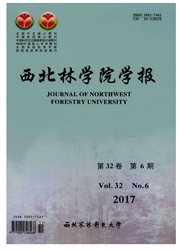

 中文摘要:
中文摘要:
分离了一株在PDA上强烈产生红色素的小叶杨(Populus simonii)内生菌, ITS-nrDNA序列分析及形态学初步鉴定为:刀孢轮枝菌(Lecanicillium psalliotae)。其产红色素是一种水溶性色素,在513 nm处有强吸收峰,该色素在以葡萄糖为碳源的培养基中生长迅速,培养至23 d色素达到最大的浓度2.73 mg·mL-1,随后浓度逐渐下降。氧化剂H2O2和还原剂Na2SO3浓度逐步增大对色素有减色反应,色素在中性和碱性条件下红色加深,紫外光下长时间放置无大变化,但在紫外光照射3 h时色素达到最大色度,温度对色素稳定性的影响较小。金属离子Ca2+、Fe2+、Cu2+和Zn2+对色素影响较大,能改变色素颜色。该色素浓度为2.11 mg·mL-1时,对Escherichia coli和Pseudomonas syringa pv. actinidia拮抗作用明显。
 英文摘要:
英文摘要:
One fungus which secrets a red pigment was isolated from Populus simonii Carr. From the ITS-nrDNA phylogeny and morphology, it was identified as Lecanicillium psalliotae Zare & W. Gams. The pigment was found to be water soluble, and presented strong absorbance at 513 nm.It could be produced rapidly in the carbon medium of glucose, and reached its maximum concentration of 2.73 mg·mL-1 after 23-day culturing,then concentration was down gradually. H2O2 and Na2SO3 both acted as reversed role. Under neutral and alkali solution, the red pigment would increase its redness and without big changes after placed in UV-light for a long time. Moreover, the red pigment achieved its maximum chromaticity at 3 h of UV exposure. The resorting temperature had no significant effect on the stability of the pigment. In addition, metallic ions such as Ca2+, Fe2+, Cu2+, and Zn2+ showed strong roles on the stability of the red pigment, the ions even changed the color drastically. The pigment with a concentration of 2.11 mg·mL-1 showed strong inhibiting activity to Escherichia coli and Pseudomonas syringa pv. actinidia.
 同期刊论文项目
同期刊论文项目
 同项目期刊论文
同项目期刊论文
 期刊信息
期刊信息
